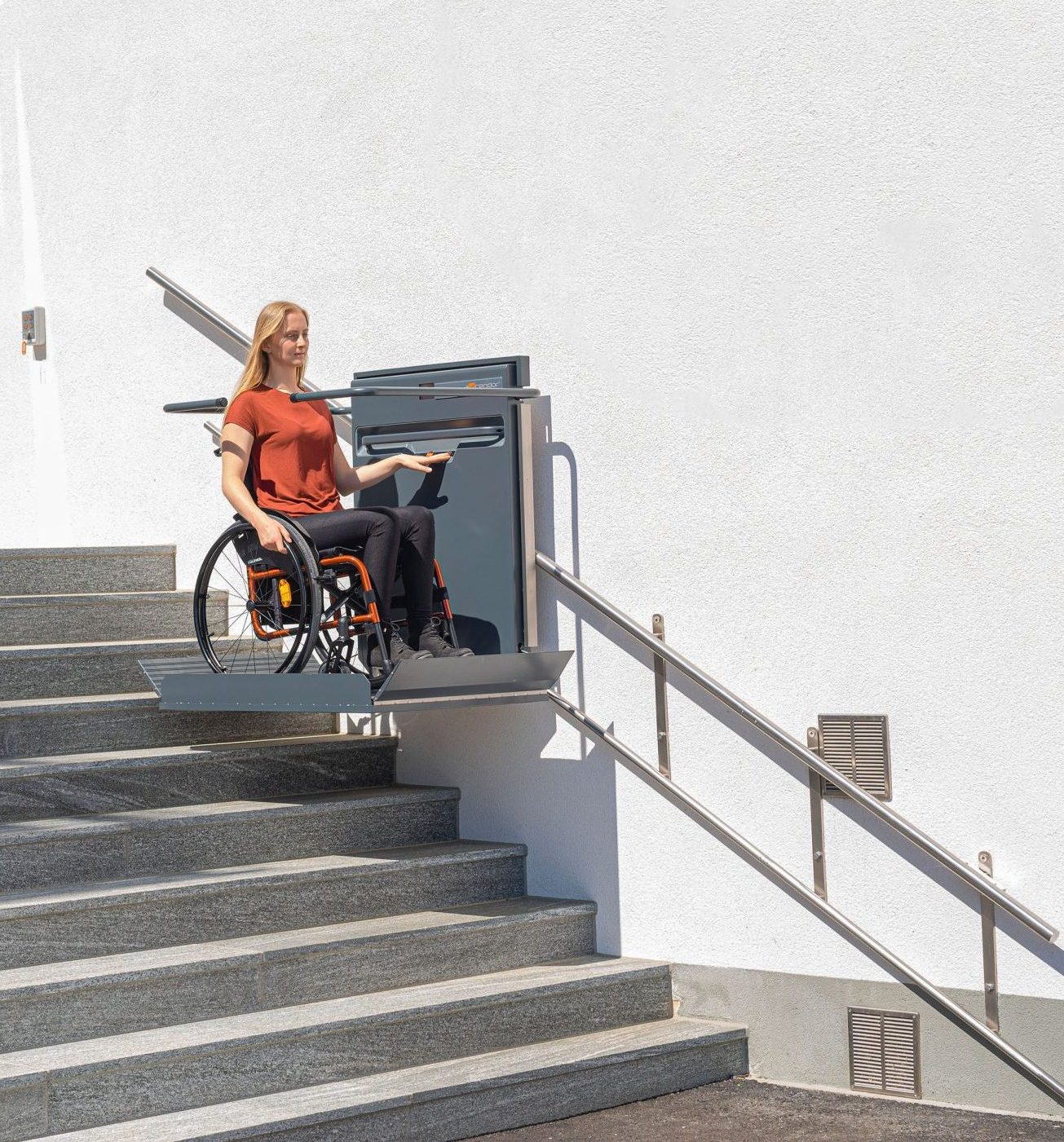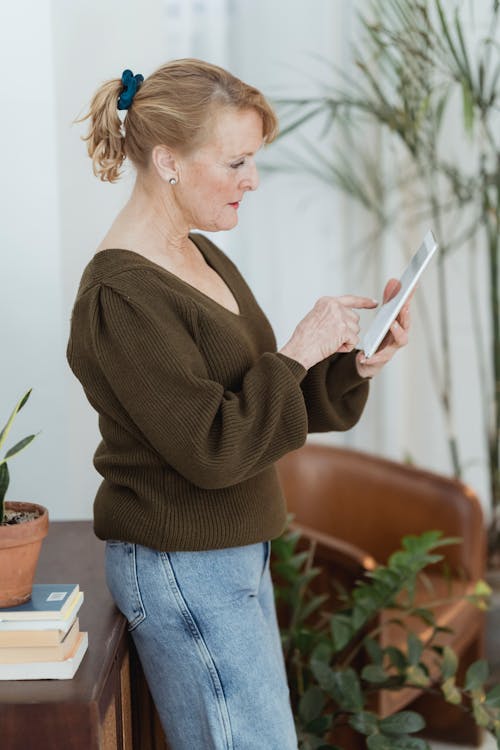How To Modify a Home for Seniors: 10 Practical Tips and Suggestions
Of more than 55 million elderly adults in the US, only around 1.3 million live in nursing homes. Most seniors prefer to age in place, remaining in their homes for as long as possible.
To ensure their comfort, safety, and well-being, caretakers and family members should implement various home modifications so seniors can age with dignity and independence within their own space.
In this post, we’ll show you how to modify a home for seniors so they can continue to live a fulfilling and healthy life without compromising their safety.
- Install motion-activated lights in hallways, bathrooms, and other frequently used areas.
Add Modifications to the Stairs

According to studies, one in five elderly experience mobility problems.
For many, walking up the stairs may become a daunting endeavor as mobility declines. Thus, implementing modifications is crucial for the safety and accessibility of seniors within their homes.
Modifications can be as simple as installing study handrails or adding a more comprehensive solution such as stairlifts.
Replace or Add Carpeting
Replace old and shaggy carpets with carpeting featuring a shorter nap to prevent seniors from accidentally tripping. Shorter carpets have a more even surface, allowing for smoother navigation for those using walkers or wheelchairs.
Tile, hardwood, and vinyl flooring allow for easier wheelchair movement, but they often pose safety concerns. They can become slippery, especially when wet, and lack cushioning which can lead to joint pain or pressure sores.
Hard surfaces like hardwood and tile can also be temperature-sensitive, which may be uncomfortable for seniors with circulation issues.
Implement Medical Alert Systems

As a person grows older, the more valuable medical alert systems become. These systems allow at-risk elders to quickly reach out to pre-set contacts and emergency services if an urgent situation arises.
Most systems also provide around-the-clock monitoring, giving seniors and their families a sense of security knowing that assistance is available at any hour. They often come with fall detection technology, automatically triggering an alert if a fall is detected.
Here are some examples of medical alert systems and how they work:
- Personal Emergency Response System (PERS): a wearable device that comes in the form of a pendant or wristband, equipped with an emergency button to press
- Mobile Alert Systems: Comes with GPS tracking capabilities, allowing users to contact help from anywhere.
- Fall Alert Devices: Equipped with a sensor called a triaxial accelerometer, which is programmed to look at rapid movements or changes in motion.
- Medication Dispensers: Automatic dispensers that remind users to take their medication at the scheduled time.
Invest in Smart Home Devices

In an age where nearly everything is connected and automated, investing in smart home devices is a surefire way to simplify life and transition to a new normal after an illness or injury.
Voice-control home devices, such as Google Home and Amazon Echo, allow seniors to access their media, call their friends, and order groceries without having to physically interact with their devices.
Smart lighting is another excellent addition to a senior’s home, as it allows them to control lights with voice commands or smartphone apps.
Meanwhile, personal monitoring devices can help seniors keep track of their water intake, their heart rate, how much sleep they’re getting, and other health-related functions. They can also use it to send themselves reminders of when to take their medication.
These monitoring devices come in the form of wearing technology, like fitness trackers and smartwatches.
Minimize Clutter
Seniors aren’t as mobile or agile as they once were, so clutter can pose significant challenges to their safety and well-being.
Cluttered spaces increase the risk of trips and falls, and prevent seniors with mobility aids such as canes or walkers from moving freely. It also makes it more difficult to locate misplaced items.
Decluttering the home creates a tidy and organized living space, which fosters a sense of calm and mental well-being.
Here are some ideas to start with:
- Get rid of unnecessary big furniture
- Throw out potentially hazardous items (old rugs, unused/broken electronics and wires, power tools, etc.)
- Discard old clothes
- Create built-in storage solutions
- Clear floors and flat surfaces
Replace door knobs with lever handles
Door knobs don’t offer as much grip as level handles, which can be troublesome for seniors with arthritis and dexterity issues. The level design allows for a more natural and comfortable grip, reducing strain on the hands and fingers.
Implement Modifications to the Bathroom
According to studies, 80% of falls in the home occur in the bathroom. This makes them among the most dangerous areas in the house. Implementing basic modifications to the bathroom can significantly reduce the risk of falls and injuries, especially for seniors with limited mobility.
Here are some tips to create a safe and accessible bathroom:
- Add safety steps for the bathroom
- Install grab bars in key areas of the bathroom
- Use non-slip mats and rugs, as well as non-slip flooring
- Instal raised toilet seats
- Replace traditional tubs with walk-in showers
- Add a shower chair or bench
- Move toiletries and medication to an easy-to-reach area
Enhance Bedroom Comfort
Most seniors spend a good amount of time in their bedrooms. To ensure comfort, invest in an adjustable bed with a raised head or foot. For extra peace of mind, you may also want to add an assist rail to ensure stability when exiting the bed.
Don’t forget to replace old mattresses with new ones that provide proper cushioning and comfort.
Memory foam mattresses provide excellent support and pressure relief, which is particularly beneficial for seniors dealing with joint pain.
Those with allergies or respiratory issues may prefer mattresses made from hypoallergenic materials, such as latex.
Opt for Assistive Seating
Invest in a comfortable couch, armchair, or office chair designed with assistive features to meet the unique needs of seniors.
Assistive seating promotes better posture and reduces the risk of discomfort or pain, allowing older people to sit for extended periods without having to switch positions every hour.
Conclusion
The modifications above are some of the many ways you can modify a senior’s home to address concerns related to mobility and safety.
The majority of these home modifications aren’t expensive or complicated; in most cases, even a little goes a long way in creating a safer and more accessible living space for seniors.




